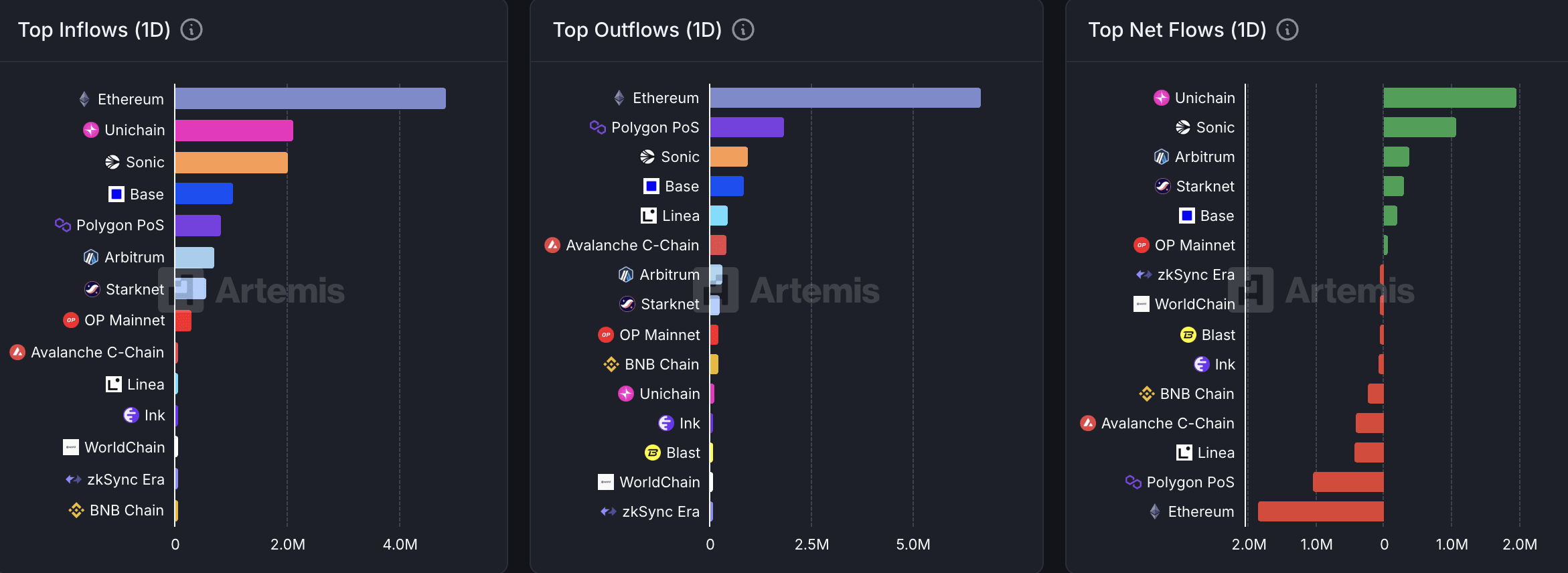Selected news
1. Hyperliquid bridge funding surpasses $5.2 billion, setting a new historical high
2. Bloomberg publicly reveals Justin Sun's '$24.6 billion' asset list, who has filed a lawsuit citing privacy breaches
3. $46 billion BTC and $1.3 billion ETH options expire today, with the maximum pain point at $118,000 and $4,000
4. Renowned YouTuber MrBeast conducts a charity live stream, related meme coin's market capitalization surpasses $7 million and gets rug pulled
5. Trump family-affiliated mining company American Bitcoin seeks to acquire a Hong Kong or Japanese listed company for financing to execute Bitcoin treasury strategy
Trending topics
Source: Overheard on CT (tg: @overheardonct), Kaito
[HYPERLIQUID]
HYPERLIQUID has recently gained widespread attention due to its remarkable financial performance. Reports indicate that its trading volume and revenue have reached all-time highs, with profit margins as high as 97%. The platform is using its revenue to buy back its token HYPE, sparking discussions in the market about its undervaluation compared to competitors like Circle. Additionally, the launch of new features and partnerships with institutions such as Anchorage Digital (including the launch of HyperEVM) have further fueled its popularity. The community is optimistic about the future growth and innovation potential of the Hyperliquid ecosystem.
[AVAX]
Today, discussions about AVAX focused on the launch of the Dinari Financial Network. This is an Avalanche-powered Layer 1 blockchain aimed at tokenizing and facilitating compliant trading of US stocks. This move is seen as an important step in merging traditional finance with blockchain technology and has attracted partnerships with institutions like VanEck, BitGo, and Gemini. Meanwhile, Avalanche's data performance in terms of trading volume growth and partnerships with large entities such as Visa and NBA teams also highlights its expanding ecosystem and future potential.
[BNB]
BNB price reaches an all-time high (ATH) of $868, with market capitalization exceeding $120 billion, becoming one of the most valuable assets globally. This increase is attributed to several strategic advancements, including the completion of the 'Maxwell' hard fork (reducing block time to 0.75 seconds) and further promoting its application in traditional finance through collaborations with institutions like Kraken and Ondo Finance. The BNB Chain ecosystem is also expanding, with increased on-chain activity and the launch of more new projects, further boosting the value of BNB. The community is generally optimistic, expecting its price to soon break through $1,000.
[UNION]
Today, UNION sparked heated discussions on Twitter due to the launch of its $U token on the Ethereum mainnet, marking an important milestone for the project. The community is excited about the upcoming token generation event (TGE) and the potential opportunities it may hold in the current ZK craze. Discussions also highlighted the project's focus on cross-chain interoperability, with many looking forward to the subsequent release of a complete roadmap, token economic model, and audit tools. The minting of 1 billion tokens has triggered speculation about its future value, and the community eagerly anticipates UNION's performance in driving adoption post-TGE.
Selected articles
1. (From leading to trailing: why SOL struggles against ETH's offensive)
On August 13, ETH strongly broke through $4,700, reaching a new high in four years, while during the same period, SOL struggled to remain around $200. In 2024, Pump.fun drove a meme frenzy across the entire Solana chain, and earlier this year, Trump launched $TRUMP on it, pushing SOL's price to around $300, leading to calls for 'Solana to replace ETH.' However, the actual market trend provided a sobering answer. Despite both ETH and SOL advancing treasury strategies to accumulate 'bullets' for their ecosystems, their performances clearly diverged— the SOL/ETH exchange rate plummeted from 0.09 at the beginning of the year to 0.042, maintaining a weak trend throughout the year. The underlying reasons may reflect not only price fluctuations but also a comprehensive manifestation of narrative heat, ecosystem structure, and differences in capital expectations.
2. (The wave of cryptocurrency company IPOs is coming, how to play on-chain Pre IPO)
In June of this year, internet brokerage giant Robinhood launched a new service for European users, providing trading opportunities for 'stock tokens' of top private unicorn companies like OpenAI and SpaceX. Robinhood even airdropped a small amount of OpenAI and SpaceX tokens to eligible new users as a promotional tactic. However, this move was immediately opposed by OpenAI. The official OpenAI account clarified on X, stating, 'These OpenAI tokens do not represent equity in OpenAI, and we have no partnership with Robinhood.' Under this message, Elon Musk did not directly comment on Robinhood's tokens, but he retweeted and commented on OpenAI's statement, sarcastically noting, 'Your own 'equity' is fake.' This jibe mocks OpenAI's capital operations after transitioning to a profit-making entity and highlights the considerable resistance private companies have against losing 'pricing power' over such shares. Despite the skepticism, traditional brokers' attempts reflect the market's strong interest in on-chain Pre-IPO asset trading. The reason is simple: the enormous benefits of the primary market have long been monopolized by a few institutions and high-net-worth individuals, with many star companies seeing their valuations soar upon going public (or being acquired). Taking software design company Figma as an example, after failing to complete its acquisition by Adobe due to antitrust issues, Figma went public independently in 2025 with an initial price of $33 per share, soaring to $115.5 on the first day, a staggering increase of 250%; this price corresponds to a market cap of nearly $68 billion, far exceeding the $20 billion valuation during prior acquisition negotiations with Adobe. Another recent example is the newly listed cryptocurrency exchange Bullish, which surged 290% after opening. These cases suggest that investing in such companies before their IPO could yield several times or even tens of times the returns. However, traditionally, it is relatively difficult and complex for ordinary investors to participate in such opportunities. Allowing retail investors to share in the future appreciation dividends of these star companies through blockchain is precisely what makes the concept of on-chain Pre-IPO appealing.
On-chain data
On-chain capital flow situation for the week of August 15




